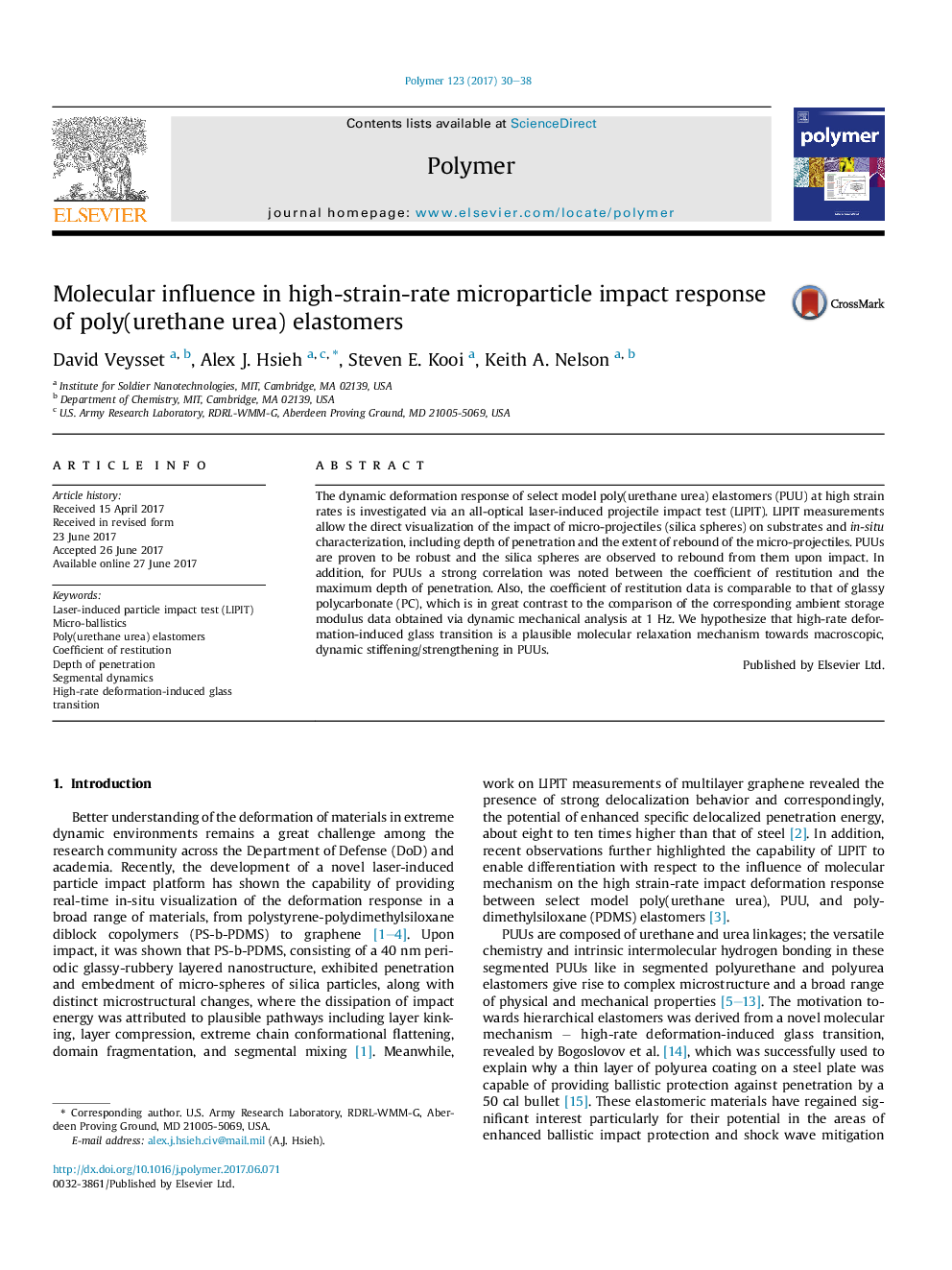| Article ID | Journal | Published Year | Pages | File Type |
|---|---|---|---|---|
| 5177687 | Polymer | 2017 | 9 Pages |
â¢LIPIT is viable for direct visualization of supersonic impact by silica micro-projectiles on polymer substrates.â¢LIPIT enables in-situ characterization of depth of penetration and the extent of rebound of micro-projectiles.â¢Dynamic strengthening is key to the rebound of PUUs, regardless of compositions, upon impact via LIPIT.â¢In contrast, polycarbonate exhibits predominantly apparent plastic deformation.â¢Deformation-induced glass transition is plausible towards dynamic stiffening in PUUs.
The dynamic deformation response of select model poly(urethane urea) elastomers (PUU) at high strain rates is investigated via an all-optical laser-induced projectile impact test (LIPIT). LIPIT measurements allow the direct visualization of the impact of micro-projectiles (silica spheres) on substrates and in-situ characterization, including depth of penetration and the extent of rebound of the micro-projectiles. PUUs are proven to be robust and the silica spheres are observed to rebound from them upon impact. In addition, for PUUs a strong correlation was noted between the coefficient of restitution and the maximum depth of penetration. Also, the coefficient of restitution data is comparable to that of glassy polycarbonate (PC), which is in great contrast to the comparison of the corresponding ambient storage modulus data obtained via dynamic mechanical analysis at 1Â Hz. We hypothesize that high-rate deformation-induced glass transition is a plausible molecular relaxation mechanism towards macroscopic, dynamic stiffening/strengthening in PUUs.
Graphical abstractDownload high-res image (369KB)Download full-size image
